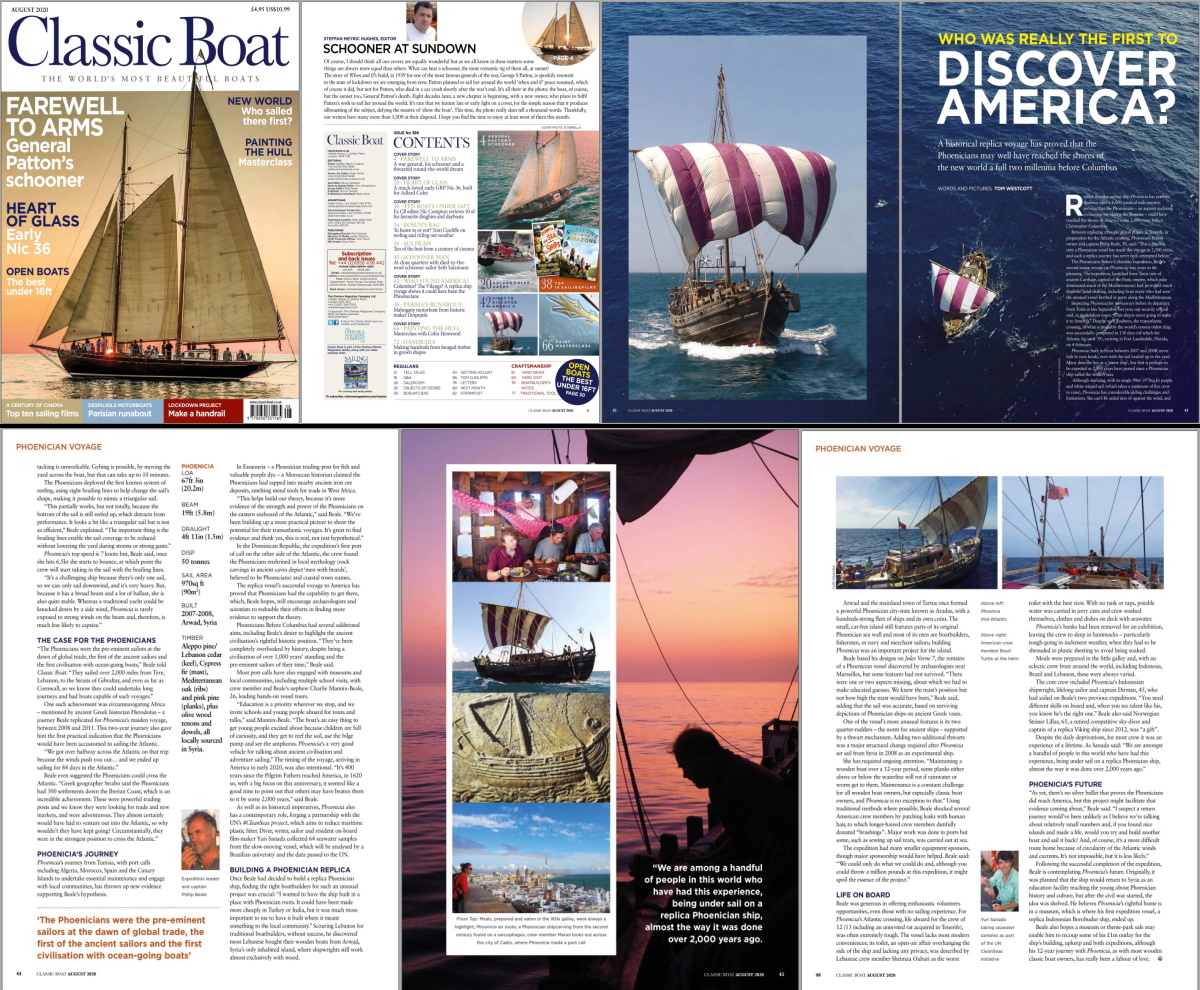A NEW VOYAGE
In 2019, in search of answers to one of the greatest mysteries of antiquity, the same replica ship was prepared for another epic voyage. This time a quest to investigate if the Phoenicians, or other ancient people from the Mediterranean, had the technology to cross the vast Atlantic Ocean, and, perhaps, reach the Americas millennia before the official European discoveries. Once again, volunteers came from different parts of the world, from different walks of life, to join this experimental archaeological expedition.
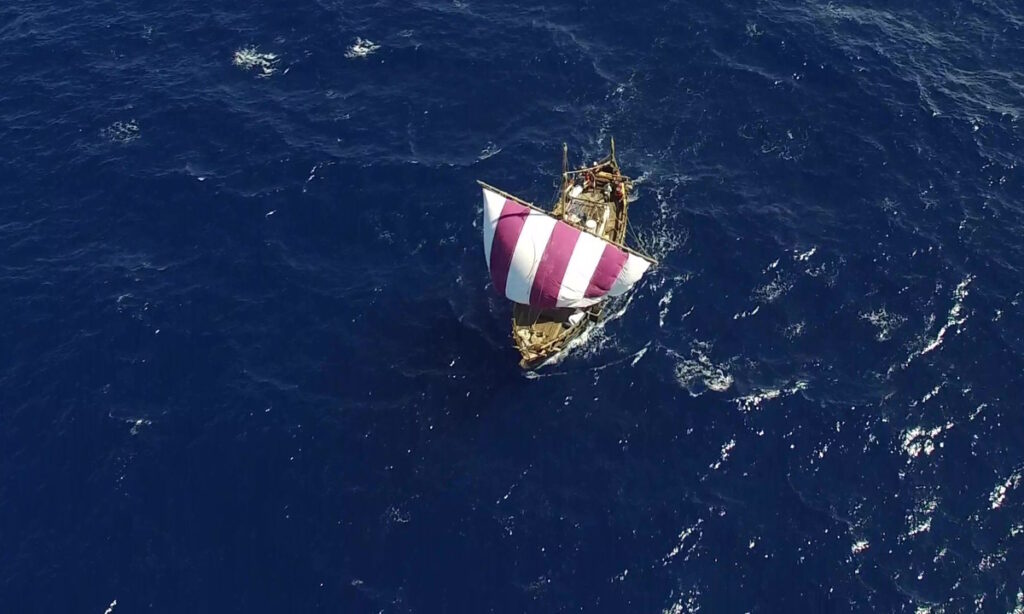
TUNISIA
The new expedition had to begin in a historically important Phoenician city. Carthage, in the middle of the Mediterranean Sea, founded in 814 BC, as the last stand of the Phoenician Civilization, was the obvious choice. Even before the ship arrived in Tunisia for the beginning of the expedition, the activities were being planned by a local cultural organization, the Association Didon de Carthage. The mission of this unique Tunisian cultural group is to research and promote its rich culture, nationally and to the world. They provided all the support the expedition needed for a great start, from a place in the most modern marina in Tunisia, to guided visits to Carthaginian archaeological sites, and even supplies for the long voyage ahead. They organized many receptions with authorities, scholars, and personalities, and a great departure ceremony, that left the expeditionaries with a real sense of responsibility to succeed in their mission. Very good people from the old world were counting on them.
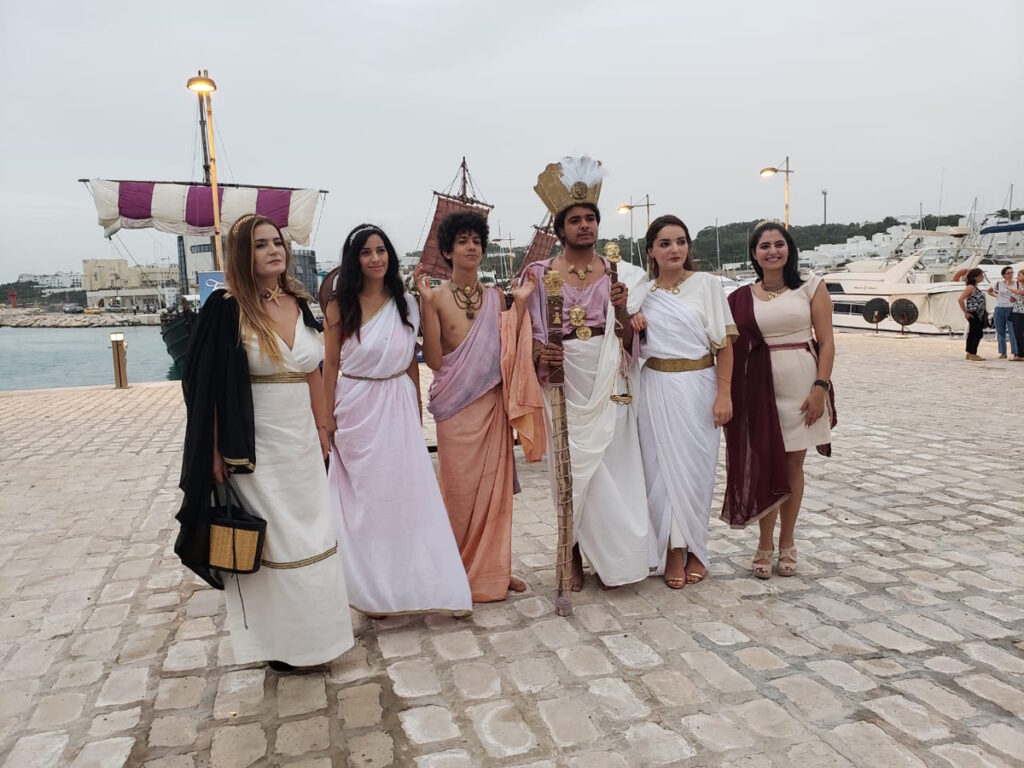
ALGERIA
The ship was supposed to sail directly to Gibraltar, and all was good in the first few days. However, damage to the top of the mast forced them to look for a place to execute repairs. Phoenicia was sailing along the coast of Algeria, so they had to ask for special permission to stop in that country, which traditionally is not very open to foreigners. They were allowed to stop at the military port for 3 days for repairs, and their permission to stay was limited to the port. However, everybody was very sympathetic to the expedition, and the chief of security himself offered to take the crew for a tour of Algiers, a few at the time in his own car. As they went out to get supplies, they found Algeria to be an interesting country. Soon the ship was repaired, and they proceed on their journey toward the New World.
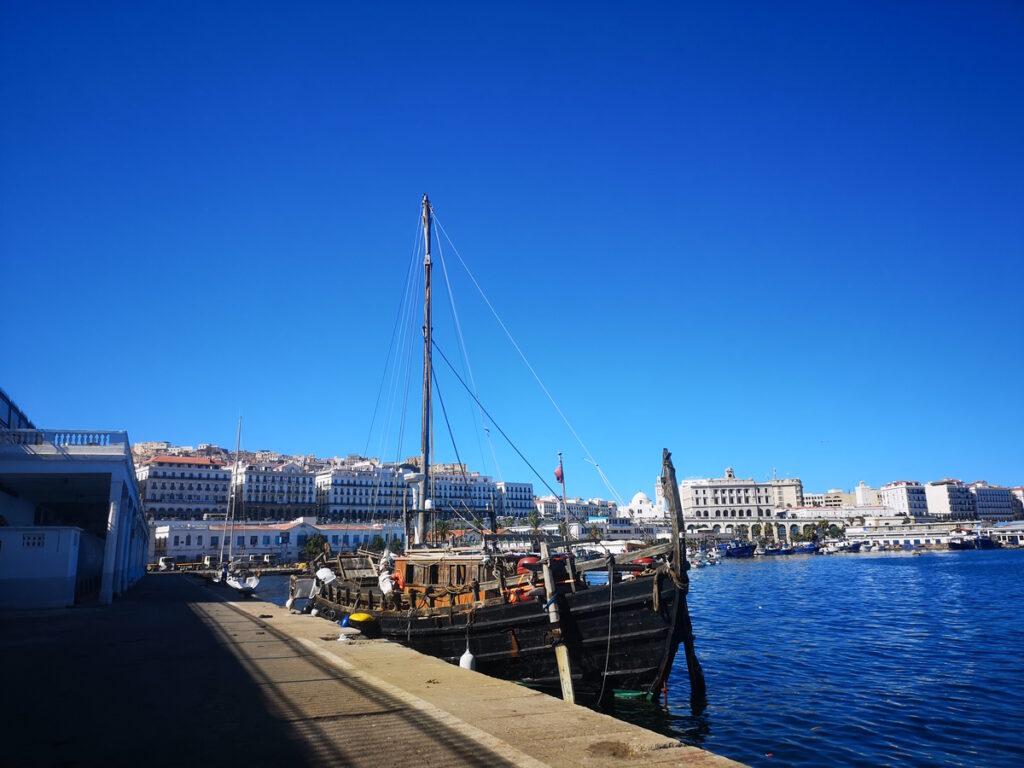
LA LINEA AND GIBRALTAR
This time they were successful in crossing the Mediterranean Sea and arriving in La Linea, Spain. This city is located at the border of Gibraltar, the Rock, a British Territory by the Mediterranean Sea. Gibraltar is one of the oldest Phoenician colonies and represents the gates to the unknown, the exit to the vast Atlantic ocean at the legendary Pillars of Hercules. The expeditionaries explored the Rock before departing to the next destination, the city of Cadiz, or Gadir, one of the oldest cities in Europe.
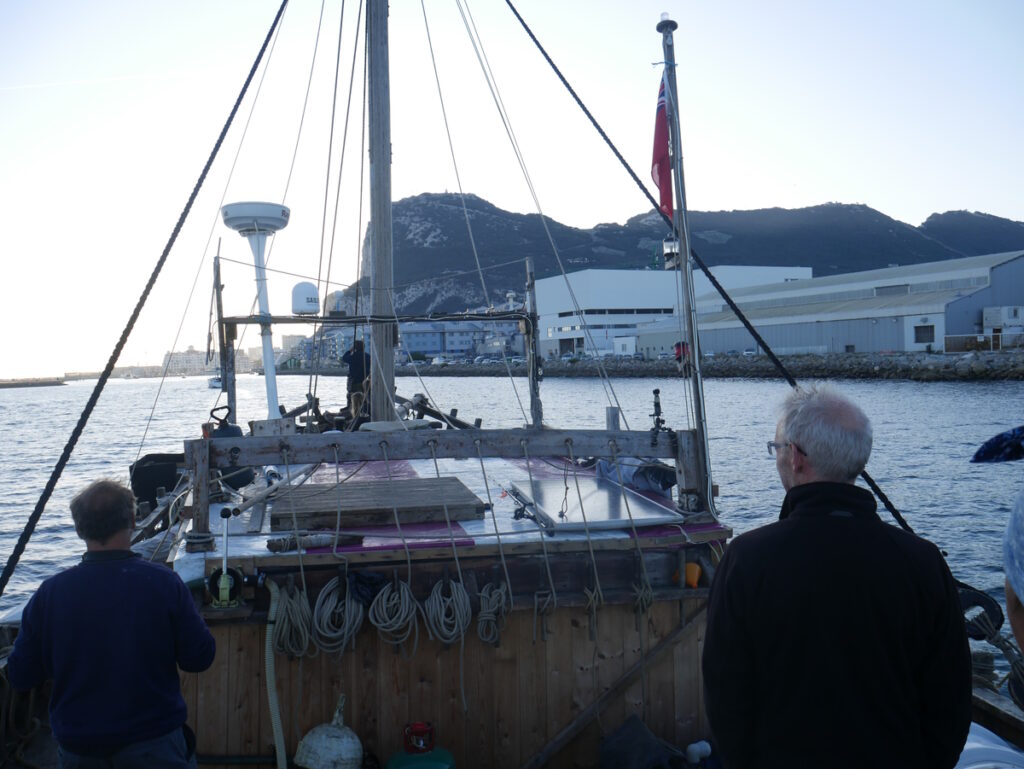
CADIZ
Founded by the Phoenicians in 1100 BC, Cadiz is a charming European city that is proud of its history. The crew was well received by the local authorities and historians and used their time to learn more about the Phoenician influence in this part of the Old World. This place is symbolic of the expedition, as it represents the farthest known Phoenician colony away from Phoenicia’s homeland in Lebanon and Syria. Not far from this place is the Port of Palos de La Frontera, from where Christopher Columbus left for his voyage of discovery of America, perhaps following the wake of the Phoenician ships, thousands of years before him.

ESSAOUIRA
Leaving Europe behind, the next stop was far away, in the Atlantic Ocean, on the coast of Africa. The Ship arrived by night at the ancient port of Essaouira or Mogador for the Phoenicians. On the next morning, they moved into the amazing fishing harbor. The city has the splendor of ancient Arab towns and is often used as an exotic movie location. Mogador was an important port in Phoenician times, since at least 600 BC, from where they exported iron, copper, gold, and frankincense. The crew was enchanted with the reception they received in this passage. Mister Andre Azoulay, Senior Advisor to the King of Morocco, organized a reception to celebrate the historic passage of the Phoenician ship by the exotic Essaouira. Soon it was time to set sail again. This time away from the African and European continents.
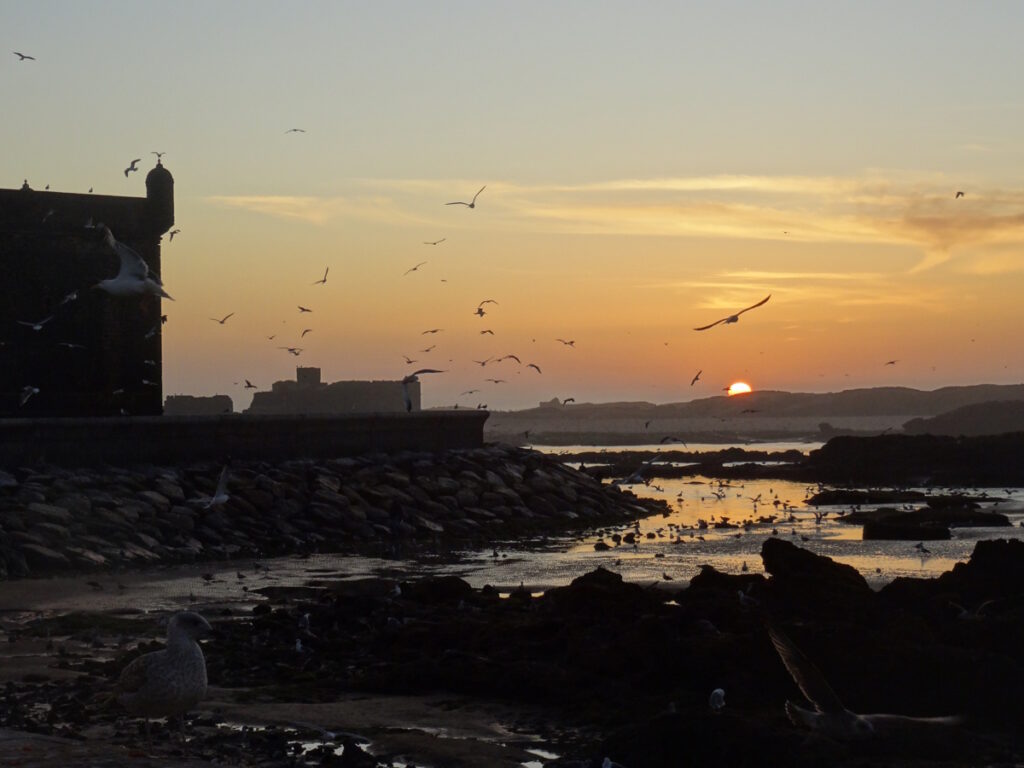
TENERIFE
Before venturing further into the vast Atlantic Ocean, the expedition stopped one last time, in the Canary Islands, in Tenerife. The Crew took time to explore this amazing place. This island is 60 miles west of Morocco and has mysteries of its own. The Pyramids of Guimar are a group of ruins still unexplained. The Norwegian explorer Thor Heyerdahl created here a museum dedicated to possible Transatlantic contacts in ancient times, and for them, the Phoenician Ship expedition is a most interesting theory. Back to the ship, the crew dedicated themselves to the necessary repairs. This would be their last chance to prepare the ship for the long ocean crossing. After many days they were ready to attempt the crossing of the Atlantic Ocean. They knew they would face the unknown, in name of science, and they would have to be ready for anything. Once they set sail, there would be no turning back, and it would be alone, the same as if they had embarked on a 3 thousand years time travel. They departed knowing that with Phoenicia’s capabilities, they would have to succeed in crossing the Ocean, as they could not return against the prevailing wind and currents.
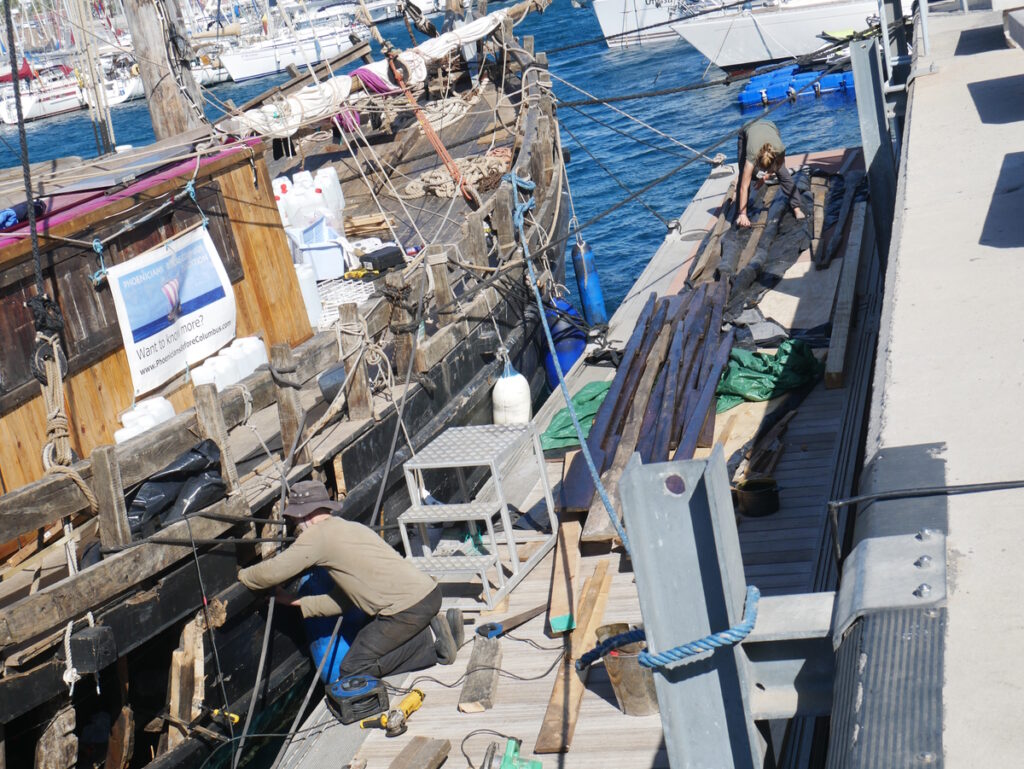
ATLANTIC OCEAN
The crew knew that they had a long way ahead, many weeks out at sea. Crossing an ocean in a modern sailboat could be boring if the crew is lucky. However, the crew of Phoenicia had to be attentive all the time.
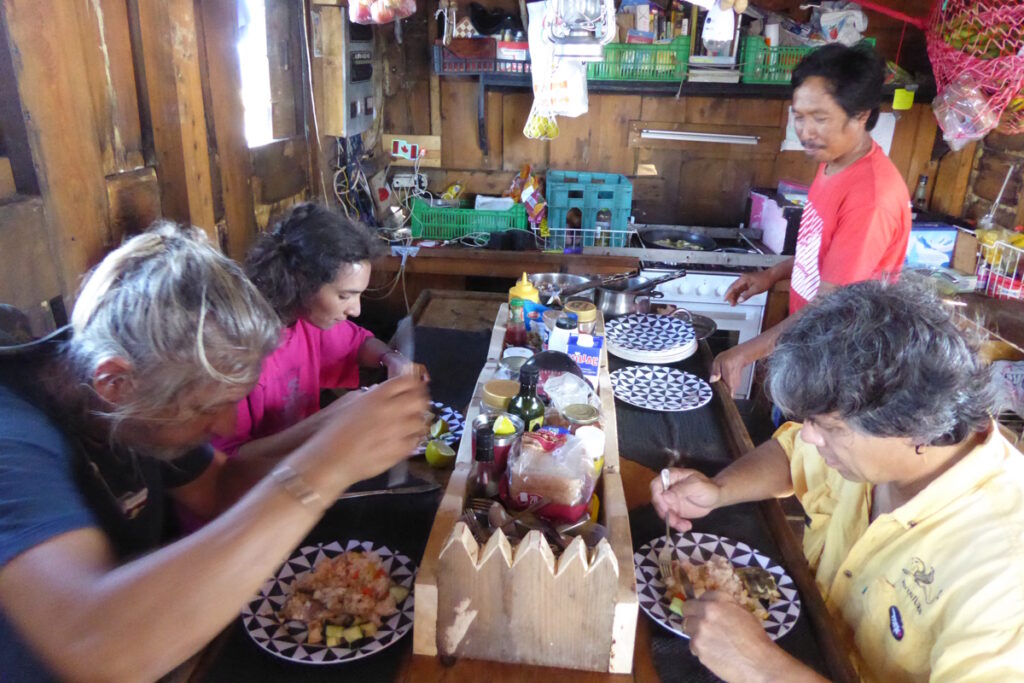
Divided into 2 teams, they alternated between keeping the boat sailing all the time and doing the many domestic chores, like cooking and cleaning. And the inevitable maintenance of the many systems that keep the ship afloat and moving forward. The long crossing had moments of terror and dangers the crew had to face, but other moments were filled with inspiration and beauty.
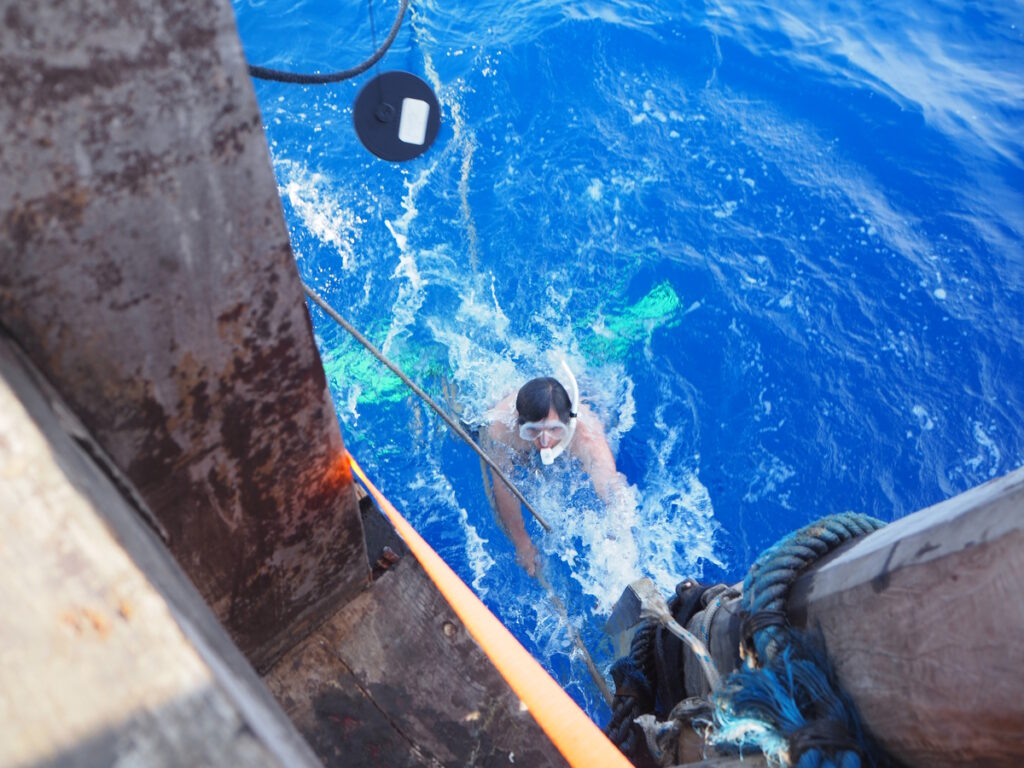
One major problem they faced came as a very small surprise. After the first week of sailing, they noticed their food supply was being attacked by a rat. With the threat of having their food contaminated and no way to resupply, they had to find a way to capture that animal. Some crew started to get really upset psychologically about living in a close space with the vicious rodent. A kind of contest was set aboard, with Indonesian, British, and Brazilian traps being engineered. After a few days, Yuri caught the rat to the relief of everyone aboard. The rest of the crossing was calm, and the ship sailed at a good average speed.
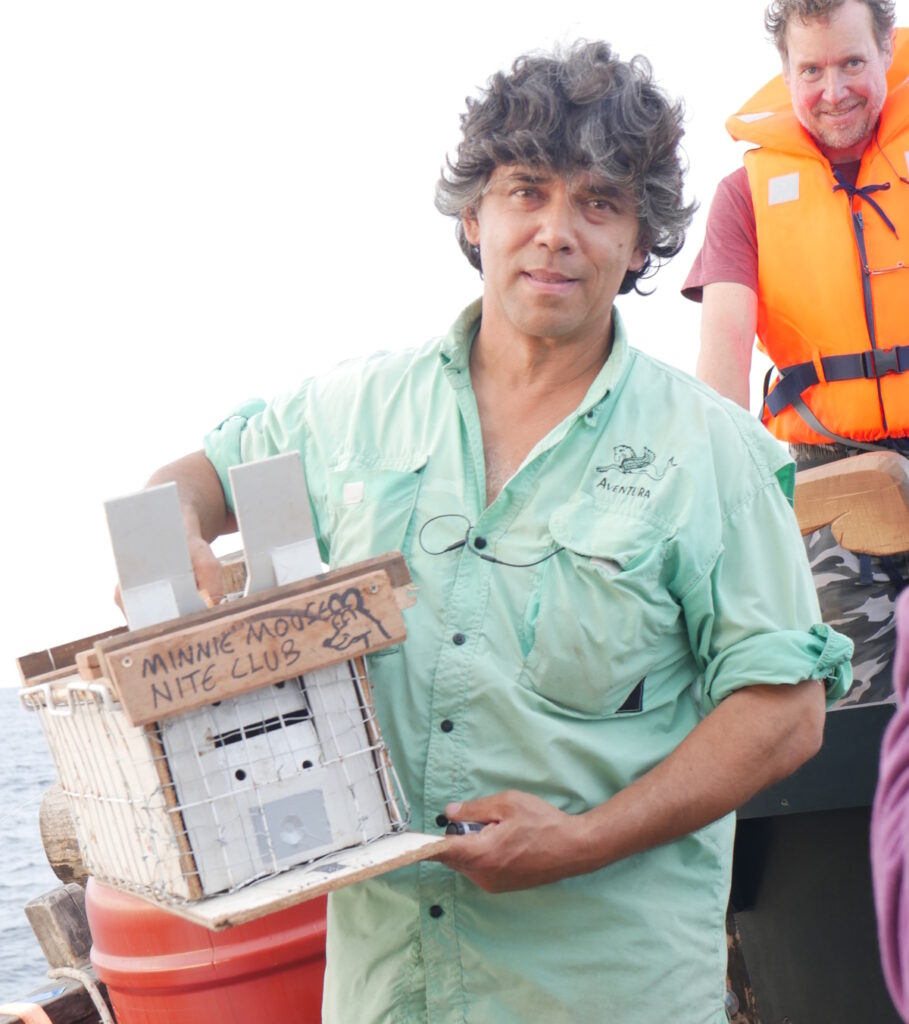
Occasionally they would find themselves becalmed, a good opportunity to inspect the hull underwater and to have a nice blue water swim.
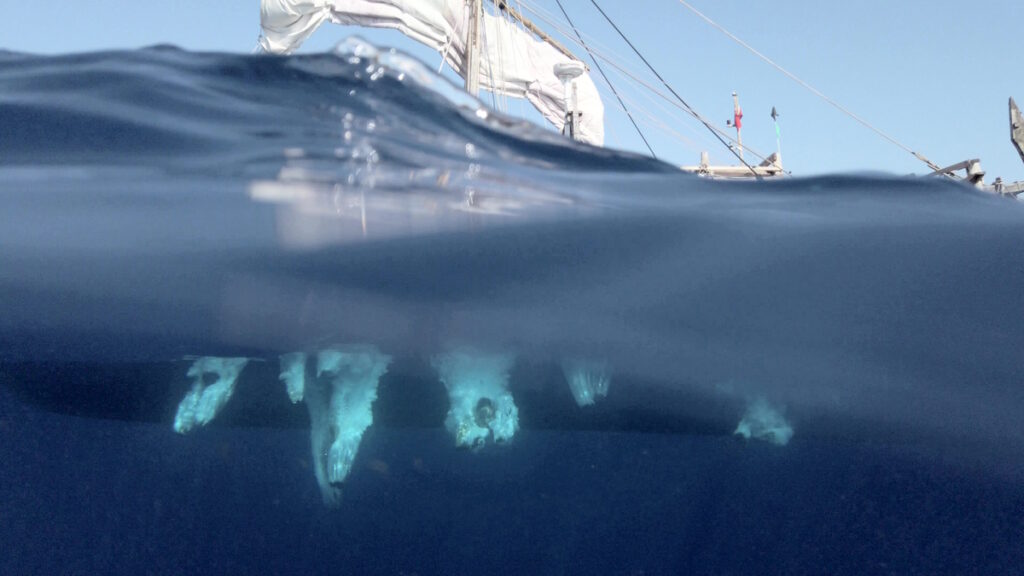
One of the activities of the expedition was to advocate for the Clean Seas Campaign, a global movement that denounces the presence of microplastics in the oceans and promotes the necessity to reduce the use of single-use plastic. They took water samples every day since they left Tunisia, looking for the presence of microplastics in the water.
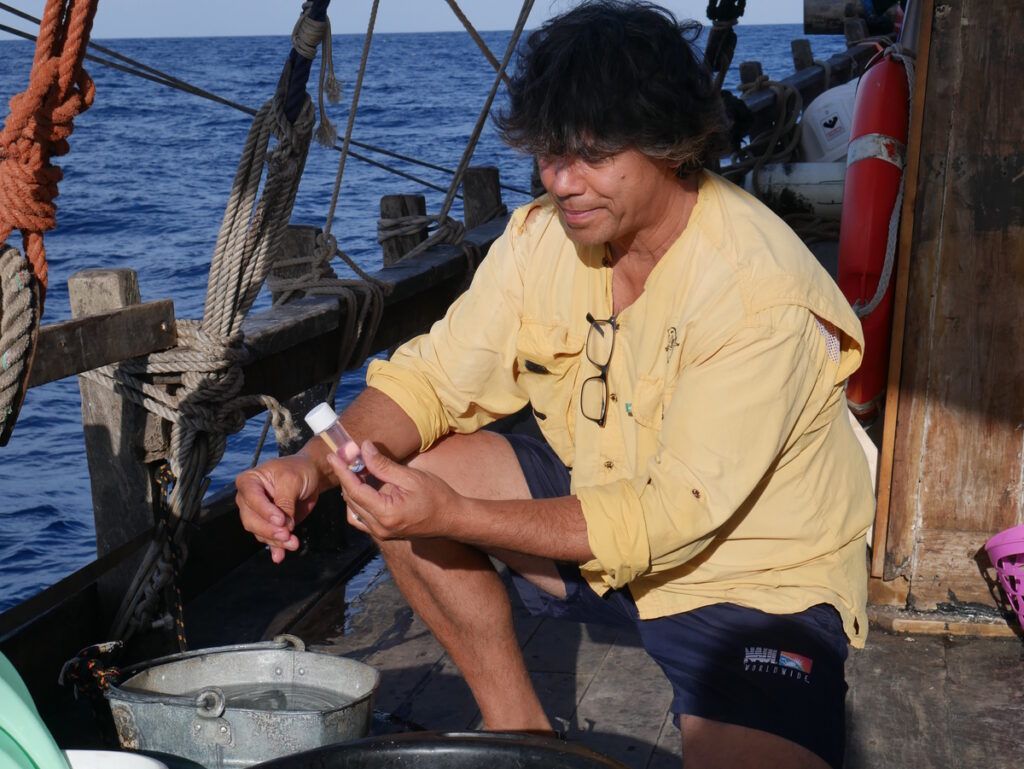
After 39 days, they finally spotted land, on the same island of Hispaniola that Christopher Columbus used as a base in 1492. But they now knew that the Phoenicians might have arrived there long before the Genovese. To their grateful surprise, a reception was organized by the local supporters at the Dominican Republic Navy Base, including a martial band. The Phoenicians were officially in the Americas, maybe for the first time. Or maybe for the first time in thousands of years.
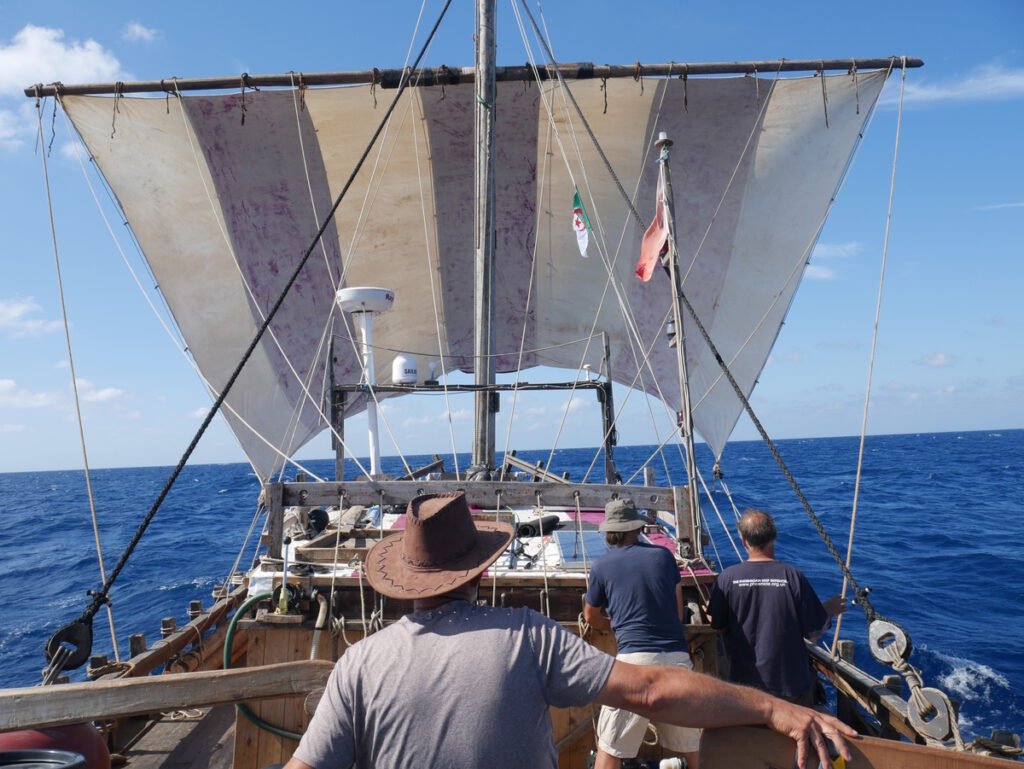
SANTO DOMINGO
Santo Domingo, the capital of the Dominican Republic, is a beautiful Caribbean town, with historical relevance to the official discovery of America. Perhaps even before that. They used their time there to recover from the long sea crossing, enjoy the place, and at the same time prepare the ship for the last leg of the expedition. The crew celebrates its entrance in the year 2020 in a rented house in the old town, next to the house where Christopher Columbus lived on the island. The local Lebanese community, descendants of the Phoenicians, invite them to visit the north part of the island, the beautiful Samana Bay, a place with a Phoenician name, according to local legend. There they visited a few caves with interesting prehistoric wall paintings. After a few weeks and many repairs to the ship, they decide to move to their last destination.

FLORIDA
Sailing along Haiti, Cuba, and other Caribbean islands. Their destination was the United States of America, a few days and many miles ahead. A short sail for the modern salty Phoenician sailors, but a gigantic symbolic archaeological step. They arrive in the state of Florida on February 4th, 2020, to a hero’s reception at the Coral Ridge Yacht Club in Fort Lauderdale. They had proved that ancient people, the Phoenicians, had the technology to arrive in the Americas, almost 3 thousand years before the European explorers. After an excellent week staying at Coral Ridge to recover, they moved for another celebration in Miami. They berthed at the Shake-a-leg Miami, an organization that promotes maritime activities for children and adults with disabilities.
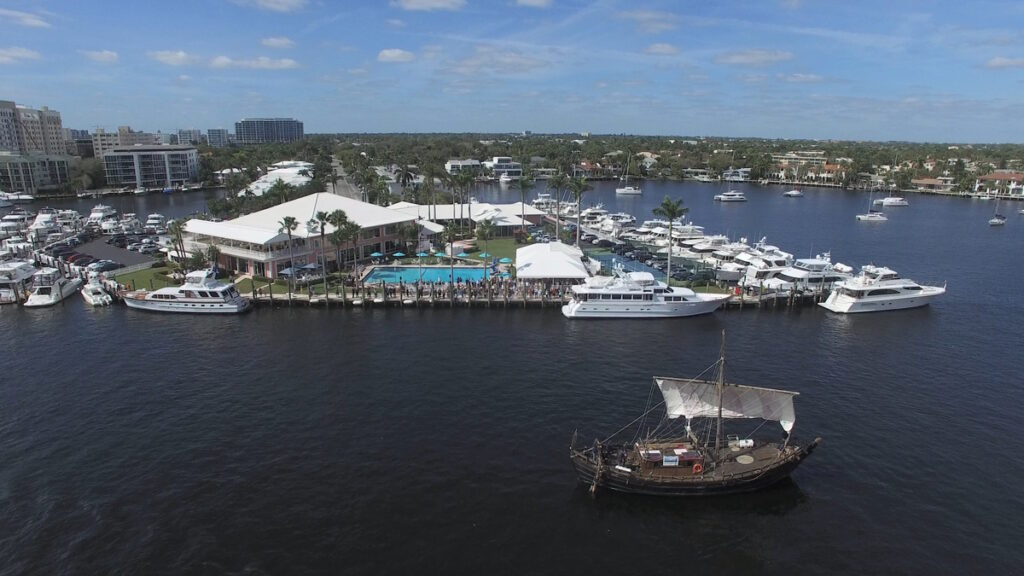

- Expedition official Website: www.phoeniciansbeforecolumbus.com
- Parceria com a ONU Meio Ambiente para Campanha Oceanos Limpos. / Partnership with UN Environment Clean Seas Campaign.
- www.unenvironment.org/news-and-stories
- Could Phoenicians have crossed the Atlantic? Aramcoworld Magazine
- https://www.middleeasteye.net/discover/who-reached-america-first-columbus-or-phoenicians
- Classic Boat Magazine – Agosto 2020

